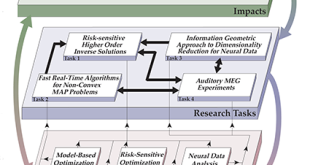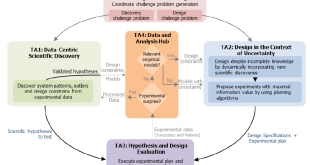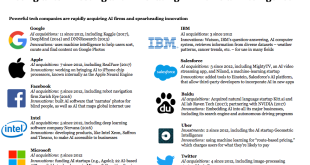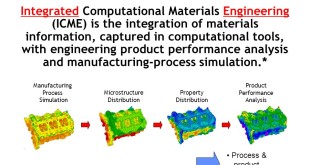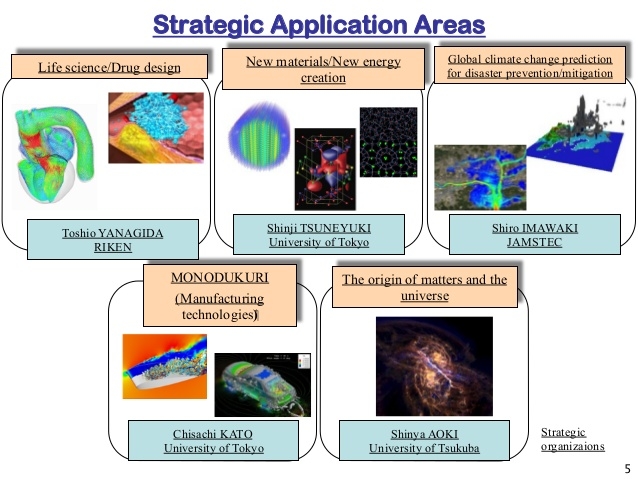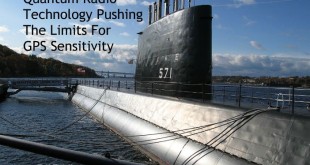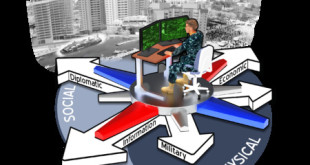The United States and Britain in 2018 accused Russia of launching cyber attacks on computer routers, firewalls and other networking equipment used by government agencies, businesses and critical infrastructure operators around the globe. Network infrastructure consists of interconnected devices designed to transport communications needed for data, applications, services, and multi-media. Routers …
Read More »DARPA’s Lagrange developing optimization algorithms for uncertain, dynamic, multiscale settings like Real time neuroimaging data
Mathematical optimization is a branch of applied mathematics that in the broadest senselooks for best solution with regard to some criterion from some set of available alternatives. The advent of the digital computer and a tremendous subsequent increase in our computational prowess has increased the impact of optimization in our …
Read More »DARPA’s SD2 developing tools to design complex systems like synthetic biology, neuro-computation and polymer chemistry
Engineers regularly use high-fidelity simulations to create robust designs in complex domains such as aeronautics, automobiles, and integrated circuits. In contrast, robust design remains elusive in domains such as synthetic biology, neuro-computation, and polymer chemistry due to the lack of high-fidelity models. DARPA’s Synergistic Discovery and Design (SD2) program aims …
Read More »Artificial Intelligence Race among tech gaints like Google and Baidu from facial recognition into AR and autonomous driving
As the world itself becomes more complex, AI will become the defining technology of the twenty-first century, just as the microprocessor was in the twentieth century, wrote Albert Einstein. In an article for the World Economic Forum, Marc Benioff, chairman and CEO of Salesforce, explains that the convergence of big data, machine …
Read More »Researchers employing Simulation and Integrated Computational Materials Engineering (ICME) to accelerate the development of new materials
Finding new materials has traditionally been guided by intuition and trial and error,” said Turab Lookman, a physicist and materials scientist in the Physics of Condensed Matter and Complex Systems group at Los Alamos National Laboratory. “But with increasing chemical complexity, the combination possibilities become too large for trial-and-error approaches …
Read More »DARPA CHESS Program plans for human intellect teamed with autonomous technology for cyber defense
The Department of Defense (DoD) maintains information systems that depend on Commercial off-the-shelf (COTS) software, Government off-the-shelf (GOTS) software, and Free and opensource (FOSS) software. Securing this diverse technology base requires highly skilled hackers who reason about the functionality of software and identify novel vulnerabilities. This process requires hundreds or thousands of hours of …
Read More »US Regains TOP500 Crown with Summit Supercomputer, China gradually increasing its lead over other countries in Supercomputer race
A supercomputer is a computer with a high level of computing performance compared to a general-purpose computer. Performance of a supercomputer is measured in floating-point operations per second (FLOPS) instead of million instructions per second (MIPS). There are supercomputers which can perform up to nearly a hundred quadrillions of FLOPS, …
Read More »Quantum radio may enable receivers with weakest radio signals and mapping in locations where GPS and ordinary cellphones and radios don’t work
Quantum sensing has become a distinct and rapidly growing branch of research within the area of quantum science and technology, with the most common platforms being spin qubits, trapped ions and flux qubits. Quantum sensors are measuring device that takes advantage of quantum correlations, such as states in a quantum …
Read More »Optical memory technologies promise speed of light computing, energy efficient data centers, 360 TB capacity and million year lifespan
The explosion of connected devices and digital services is generating massive amounts of new data. Digital world is growing exponentially from 4.4 zettabytes (10 21 or 1 sextillion bytes) of digital data created in 2013 to an expected 44 zettabytes by 2024. To make this data useful, it must be stored and analyzed …
Read More »DARPA’s COMPASS developing artificial intelligence based decision making software to help commanders in Hybrid Warfare
Hybrid Warfare (HW) is a military strategy that blends conventional warfare, irregular warfare, cyber warfare and subversion, and blurs the formal distinction between war and peace. It is often characterised by the use of fictitious propaganda, deniable forces, espionage, the mobilisation of ethnic, linguistic or confessional minorities, and terrorism. …
Read More » International Defense Security & Technology Your trusted Source for News, Research and Analysis
International Defense Security & Technology Your trusted Source for News, Research and Analysis

